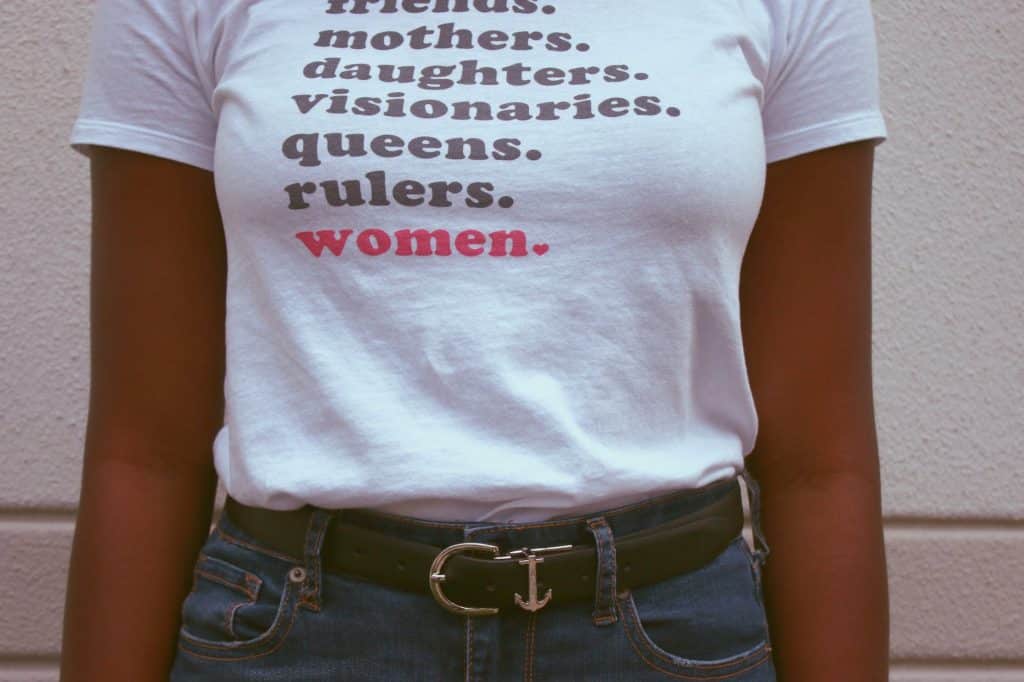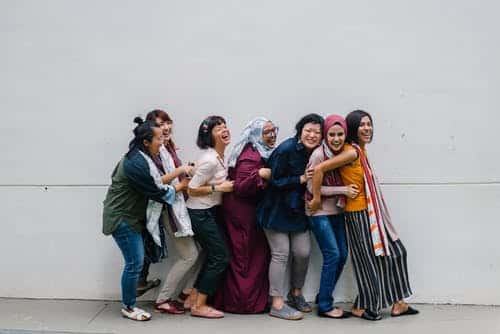
In 1901, the 8th of March was declared International Women’s Day, in light of working-class women’s issues and to promote women’s voting rights. Ever since, women’s significance and position in society have increased at a high pace in the struggle to be valued and share the same rights as their male counterparts. On paper, we’ve achieved equal rights and, perhaps that’s why a lot of people frown at the idea of “feminism” or else struggle with the term.
Unfortunately, we tend to assume that the Western world has reached the epitome of gender equality, while being quick to point our fingers to other cultures. This is because laws or forms of dress are more explicit than the subtler inequalities in our own backyard. For instance, as much as Western culture does not explicitly impose a dress code on women, it readily puts the blame on victims of sexual abuse on account of attire. Although it is very true that women worldwide are still suffering from major inequalities, it is important not to be blind to our own social environment.
Working in the educational field, I couldn’t help but notice how mothers still seem to take the main interest and responsibility for their children’s education – attending Parents’ Day, answering notes and helping with homework despite the fact that they too are employed. Globally, women are also the main caregiver for family members with chronic medical conditions or disabilities, including the elderly and adults with mental illnesses (Sharma, Chakrabarti, & Grover, 2016).
The same is true with regards to house-chores, as research consistently proves. A recent study conducted on Canadian couples found that women performed most of the household chores, irrespective of age, wage and work-load outside the home (Horne, Johnson, Galambos, & Krahn, 2017). Another study found this to be the case even amongst couples where the male partner is unemployed (Lippe, Treas, & Norbutas, 2017). Furthermore, the gender pay gap (GPG) is another painstaking reality. Malta flaunts one of the lowest GPG in Europe, yet the gap was still that of 11% difference in 2016 (Azzopardi, 2017).

Gender inequality is a highly debilitating stigma affecting one’s sense of worth and dignity. Society still feeds off the idea that men ought to be career-oriented and emotionally distant. Care-giving and the display of emotions can be perceived as a lack of “manliness”. Such toxic gender ideas inevitably lead men to suppress their emotions in order to conform to a stereotype which is incongruent with biology. Care-giving and house-chores are still attributed to and taken care of by women, despite modern legal, economic and political processes working against gender inequality. Why is that the case? Perhaps it is due to an ingrained sense of responsibility and guilt, inherited from traditional cultural ideas and perpetuated through media portrayals and public discourse. Coontz and Henderson (1986) bring forward evidence that before agricultural societies existed, gender roles were minimal. Yet, with agriculture and domestication, women became objectified and perceived as property. With the advent of the Industrial Revolution, gender roles grew stronger as men took over manual labour and women were responsible for the care of the home and the labourer.
Fighting against perceptions that have been with us since the start of civilization occurs because, as humans, we tend to resist change. However, as we are observing more frequently, this reality is slowly shifting. Social scientists, pressure groups and activists continuously strive to identify the factors that maintain gender inequality while working on achieving a more egalitarian society. Factors such as co-education (mixed-sex schools) also aid in shaping future adults with fair and unbiased perceptions of gender.
It is imperative to remember that “society” is not an abstract thing that exists beyond us. Society is our beliefs, our ideas, our thoughts and our behaviour. Hence, reflecting on our own principles, assumptions, biases and mode of living is a fundamental step to alter our social environment into a more egalitarian one. Equality can be achieved through a joint effort from local communities, institutions, national authorities and international bodies to influence change. This can be done, for instance, by implementing laws ensuring equal pay, granting paternity leave and ensuring non-discriminatory behaviour in the workplace. Through communication, education and leadership we can reshape society to one that respects our physical, psychological and emotional components.
References:
- Azzopardi, R. M. (2017). The Gender Pay Gap in Malta. International Journal of Arts & Sciences, 10(2), 41–54.
- Coontz, S., & Henderson, P. (1986). Womens work, mens property: the origins of gender and class. London: Verso.
- Horne, R. M., Johnson, M. D., Galambos, N. L., & Krahn, H. J. (2017). Time, Money, or Gender? Predictors of the Division of Household Labour Across Life Stages. Sex Roles, 78(11-12), 731–743. doi: 10.1007/s11199-017-0832-1
- Lippe, T. V. D., Treas, J., & Norbutas, L. (2017). Unemployment and the Division of Housework in Europe. Work, Employment and Society, 32(4), 650–669. doi: 10.1177/0950017017690495
- Sharma, N., Chakrabarti, S., & Grover, S. (2016). Gender differences in caregiving among family – caregivers of people with mental illnesses. World Journal of Psychiatry, 6(1), 7. doi: 10.5498/wjp.v6.i1.7






